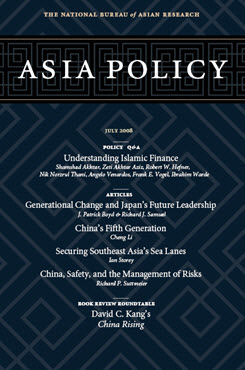The "Sixth Modernization"?
China, Safety, and the Management of Risks
This article examines the reasons behind China’s failure to develop mechanisms to manage environmental and technological risks resulting from rapid industrial development.
EXECUTIVE SUMMARY
MAIN FINDINGS
- Recent revelations about the safety of Chinese products, deep-seated problems with industrial safety in China, and the increasingly serious degradation of China’s environment point to the underdevelopment of institutions for managing environmental and technological risks.
- China’s response to these problems through efforts to strengthen state regulatory agencies is a necessary, but not sufficient, step.
- The often-puzzling relationships between risk and modernization experienced by other countries suggest that, in addition to state regulatory action, China also needs decentralized mechanisms for identifying risks, for developing science-based health and safety standards, and for ensuring the accountability of public and private actors responsible for creating hazards.
POLICY IMPLICATIONS
This “sixth modernization”—the development of institutions and values that can manage environmental and technological risks—will require significant political change and will take time. The international community, which has acquired an increasingly serious stake in the ways risks are managed in China, can help move the process forward by redoubling efforts to promote the establishment of international best practices for safety, reliability, and environmental protection:
- Foreign governments can do their part by making cooperative risk management a more central objective of their China policies and by expanding programs with the Chinese government for the development of modern regulatory regimes of law, science, decisionmaking, and enforcement.
- Foreign companies can help by giving greater priority to the dissemination of the norms and values of modern safety culture among their Chinese partners.
- Governments and industry, along with NGOs, can help move the process forward by sponsoring programs to explore how market-based mechanisms and state action can work together in the Chinese context to produce effective risk management regimes.
About Asia Policy
Asia Policy is a peer-reviewed scholarly journal presenting policy-relevant academic research on the Asia-Pacific that draws clear and concise conclusions useful to today’s policymakers. Asia Policy is published quarterly in January, April, July, and October and accepts submissions on a rolling basis. Learn more


